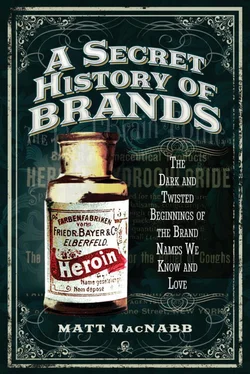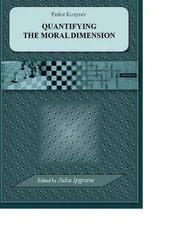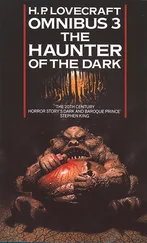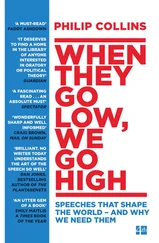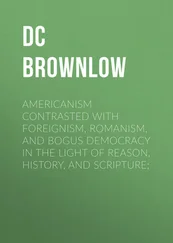Our invention consists of a new and improved method of manufacturing solid collodion and its compounds; its essential feature being the employment of a very small quantity of ether or other appropriate solvent, and dissolving pyroxyline therewith, under a heavy pressure, so that a comparatively hard and solid product is obtained, with great economy of solvents and saving of time.
The brothers learned, with a consultation from a chemist, that they had to be very careful to not apply too much heat to their compound, because it was highly flammable. They were also advised that dental-plate blanks and dentures might be a good marketplace for their invention. Rubber had long been used to make dentures, but the costs of rubber were rapidly increasing and that fact that their collodion concoction was clear in its original state made it perfect for adding dyes and pigments to that could match the various colours needed. There were further alterations needed to their method and, on 12 July 1870, Patent 105,338 for the ‘Improvement in Treating and Molding Pyroxyline’ was granted; this final version of the Hyatt brothers’ plastic was dubbed ‘Celluloid’ by Isaiah. The brothers then established the Albany Dental Plate Company and the Celluloid dental blanks were born.
Throughout the 1870s the various applications for Celluloid began to become clear to the Hyatt brothers. They continued to improve on their manufacturing techniques and found that the clear plastic could be used to imitate a number of popular high-end materials, from amber and ivory, to coral and jet. The brothers began to manufacture a variety of products and Celluloid would come to be used for everything from vanity items to piano keys, cuffs and even glasses frames. Celluloid was a revolutionary product, but it wasn’t without distinct disadvantages. The reality was that Celluloid was highly flammable and subject to premature decomposition. The plastic staple was eventually replaced by a new and exciting material dubbed Bakelite.
Early Life of Leo Baekeland
It was shortly after the turn of the twentieth century and a new product was about to be introduced to the marketplace by Belgian-American Leo Henricus Arthur Baekeland. Leo Baekeland was a chemist, born on 14 November 1863, in Ghent, Belgium. He was the son of humble parents; his mother was a housemaid and his father, a shoe mender. Baekeland was able to utilise his voracious mind and intellect to elevate himself from his meagre beginnings in Ghent. He attended the Ghent Municipal Technical School, where he graduated with honours. This achievement provided him with a scholarship to the University of Ghent in 1880, where he studied chemistry and earned a PhD by the age of 21. In 1887 Baekeland produced and patented his first invention: a process for developing photographic plates in water. He also met his future wife, Celine Swarts, while working as the associate professor of chemistry at Ghent; the couple married on 8 August 1889 and would go on to have three children: George, Nina and Jenny.
On their honeymoon, Leo and Celine took a trip to America. It wasn’t just a leisure trip for the scholarly duo however; they also took the opportunity to visit a number of universities. It was a trip to Columbia University in New York City that would change Leo’s fate – and the face of the plastics industry forever. It was there that he was recruited by Richard Anthony of E. & H. T. Anthony & Co., a photography company, and Professor Charles F. Chandler. Impressed with Leo’s résumé to date, Anthony promptly offered him a job and tempted him and his new bride to move to America, an opportunity that they weren’t about to pass up. Baekeland worked for E. & H. T. Anthony & Co. for two years, before he ventured off on his own as an independent consulting chemist. This move did not prove to be a gainful one for Baekeland and he soon turned his focus back to his inventions. Leo would go on to invent a good many items, registering over 100 patents in his lifetime. It was his boyhood interest in photography that would lead to one of his more famous inventions, and it was during this time that he produced one of his most famous products: Velox.
Due to the shaky economic climate at the end of the nineteenth century, it was difficult for an inventor to simply create a product and sell it by themselves. Baekeland was in need of financial backers. In 1891 he went into partnership with Leonard Jacob to form the Nepera Chemical Company based in the Nepera Park area of Yonkers in New York State. They began producing Velox paper by 1893 and made a significant dent in the marketplace, a dent that eventually began to affect Eastman Kodak. George Eastman brokered a deal to purchase the company, and the patent to their Velox product, in 1899. The reports of the sum differ, but it was somewhere between seven hundred and fifty thousand and a million dollars. It is said that Baekeland himself earned two hundred and fifteen thousand dollars from the sale, an amount that would come to nearly six million dollars today. It was the money that he earned from the sale of Velox to Eastman Kodak that Baekeland would use toward creating his most lasting invention: Bakelite.
The Invention and Innovation of Bakelite
I was trying to make something really hard, but then I thought I should make something really soft instead, that could be molded into different shapes. That was how I came up with the first plastic. I called it Bakelite.
— Leo Baekeland
The road to Bakelite was paved with a few failures. The development of synthetic materials was a new venture for Baekeland, but he was unable to focus on the photography field any longer, due to a twenty-year long non-compete clause that he signed as a part of the deal with Eastman. In 1900, Leo returned to Germany to brush-up on his electrochemistry. Initially, it wasn’t the intent of Baekeland to create a fully synthetic plastic; in fact he was originally looking to find a useful replacement for the commonly used material called shellac. Shellac was a resin produced from the excretion of the lac beetle, used for everything from jewellery and flooring to dentures and other moulded goods. Baekeland was successful in creating a substitute called Novolak. Leo wasn’t pleased with the commercial success of the product at the time, although it is still used today, under the name Novolac, to produce everything from billiard balls to circuit boards. Novolak may not have been a success all on its own, but it would serve as the gateway, and the basis, for Bakelite.
Unsatisfied with his shellac substitute, Baekland kept experimenting with combining phenol with formaldehyde, hoping to develop a hard plastic that was mouldable. He would eventually come upon the correct process for polyoxybenzylmethylenglycolanhydride, the chemical name of Bakelite. Bakelite was often created by adding a filler, such as wood or asbestos, to the resin. The phenolic resin was such a fantastic development, not only because it was mouldable, but it was also non-flammable, unlike Celluloid. Leo applied for a patent on 13 July 1907 under the title: ‘Method of making insoluble products of phenol and formaldehyde.’ He also applied for patent protection around the world, in countries like Canada, Denmark, Japan, Mexico, Russia, Spain, and Hungary, to name a few. Leo Baekeland made a formal presentation at the American Chemical Society on 8 February 1909. The patent for Bakelite was finalised and officially issued on 7 December 1909, with Patent 942,699. The age of plastics had begun. In fact, the term ‘plastics’ was actually coined by Baekland.
In 1910, Leo Baekeland was working out of his own laboratory to produce his miracle plastic and selling enough product to justify a serious investment and expansion. He would create the General Bakelite Company, so that he could market and manufacture his product on a larger scale both in America and internationally. The then burgeoning automobile industry was one of the first major players to utilise Bakelite commercially. The resin would be used for items such as electrical and automobile insulators, because it had a fantastic resistance to heat and was itself a great electrical insulator. Bakelite would soon be used to produce everything from telephones to radios. Bakelite, and similar synthetic products, would find a lot more use during the First World War, when there wasn’t time or resources to chase after the typical, naturally occurring resources.
Читать дальше
